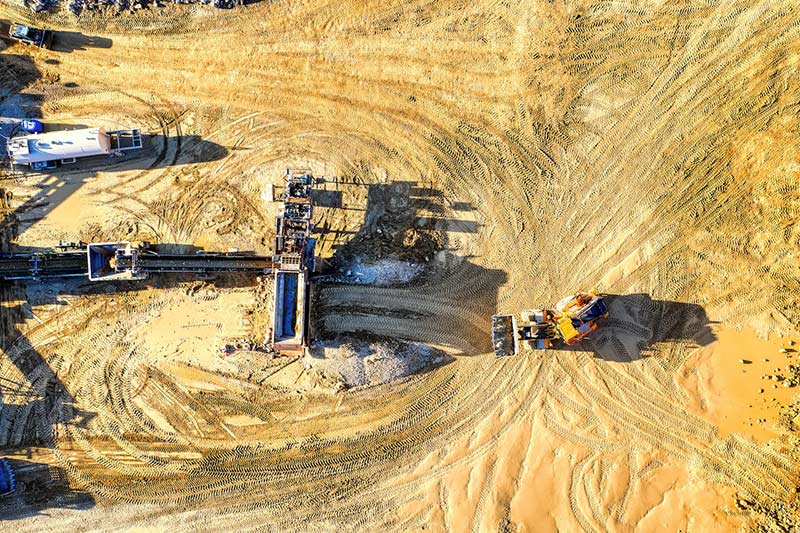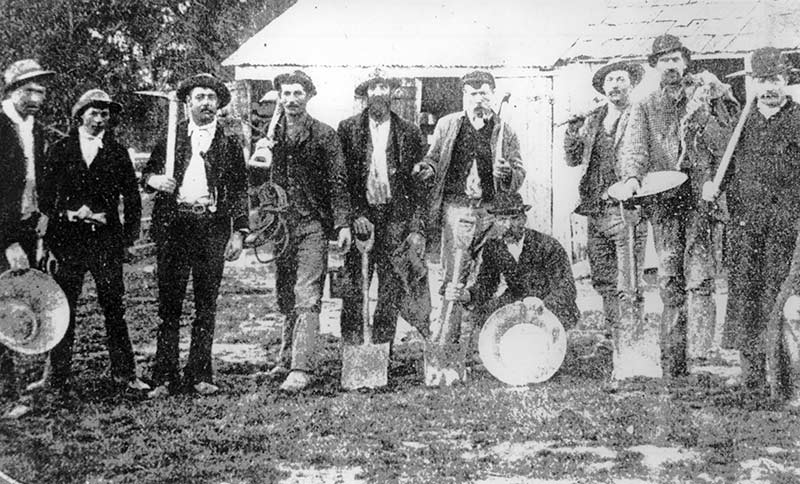Introduction
Drones, also known as unmanned aerial vehicles (UAVs), are increasingly being used in various industries, including gold prospecting. They are versatile and efficient tools that can be equipped with a variety of sensors and cameras to help prospectors in their search for gold deposits. Gold prospecting involves the exploration and examination of areas for the presence of gold deposits, and has traditionally been a physically demanding and costly process.
This article aims to explore the role of drones in gold prospecting, including the advantages and limitations of using drones for this purpose, the technology behind drone prospecting, and the future of the industry. The purpose of this article is to highlight the impact of drones on gold prospecting and how they are changing the way gold deposits are discovered and explored.
The challenges of traditional gold prospecting methods
Traditional gold prospecting methods involve physical exploration of areas believed to contain gold deposits. This can be a challenging and labor-intensive process, with prospectors often having to travel to remote and inhospitable locations. Additionally, traditional prospecting methods can be limited by human error and inaccuracies in measurement, which can result in missed opportunities or wasted resources.
The high costs associated with traditional gold prospecting methods can also be a major barrier. This includes the cost of equipment, fuel, and supplies, as well as the cost of hiring a team of prospectors. The risks involved in traditional prospecting methods, including the potential for injury or even death, can also add to the overall costs of the process.
Traditional gold prospecting methods are limited by physical limitations, inaccuracies, and high costs, which make it challenging for prospectors to find and extract gold deposits in an efficient and effective manner.
The advantages of using drones for gold prospecting
The use of drones for gold prospecting offers a number of advantages over traditional methods. Firstly, drones are equipped with advanced sensors and cameras that allow for increased accuracy and precision in locating gold deposits. They can survey large areas quickly and effectively, providing prospectors with valuable information that would otherwise be difficult or impossible to obtain through traditional methods.
Another advantage of drone gold prospecting is reduced costs and increased efficiency. Drones are able to survey remote areas at a lower cost compared to traditional methods, which can help to minimize the overall costs of gold prospecting operations. Additionally, drones can operate in areas that are too dangerous for human prospectors, which can greatly improve the safety of prospecting operations.
Drones also have the ability to survey areas that were previously inaccessible, including rugged terrain and remote locations. This expands the reach of gold prospecting operations and increases the chances of finding valuable deposits. Furthermore, the data gathered by drones can be processed and analyzed quickly, providing prospectors with real-time information that can be used to make informed decisions about the next steps in their operations.
Using drones for gold prospecting provides a number of advantages, including increased accuracy and precision, reduced costs, improved safety, and the ability to survey previously inaccessible areas. These benefits are helping to revolutionize the gold prospecting industry and improve the efficiency and effectiveness of prospecting operations.
The technology behind drone gold prospecting
The technology behind drone gold prospecting involves the use of unmanned aerial vehicles (UAVs) equipped with advanced sensors and cameras. The type of drone used for gold prospecting depends on the size of the area being surveyed and the type of information required. Larger drones, such as fixed-wing aircraft, are often used to survey large areas, while smaller multirotor drones are better suited for more detailed inspections.
The sensors and cameras used for drone gold prospecting include various types of imaging equipment, such as thermal cameras and multispectral cameras, as well as ground-penetrating radar (GPR) and magnetic sensors. These sensors can detect changes in the composition of the earth’s surface that may indicate the presence of gold deposits.
Data gathered by the sensors and cameras on drones is processed and analyzed to produce maps, 3D models, and other visual representations of the surveyed area. This information is then used by prospectors to make informed decisions about where to focus their efforts and what areas to investigate further.
The technology behind drone gold prospecting involves the use of UAVs equipped with advanced sensors and cameras, as well as data processing and analysis to turn the collected data into actionable information for prospectors. This technology is helping to improve the efficiency and accuracy of gold prospecting operations, and is set to play an increasingly important role in the future of the industry.
Case studies of successful drone gold prospecting operations
There have been numerous successful case studies of drone gold prospecting operations in recent years. These cases demonstrate the real-world impact of using drones in gold prospecting, and highlight the advantages and benefits of this technology.
One example of successful drone gold prospecting is a project in Western Australia, where a mining company used drones equipped with multispectral cameras to survey large areas of land in search of gold deposits. The data gathered by the drones was processed and analyzed to create detailed maps of the surveyed area, which allowed the company to make informed decisions about where to focus their efforts. The result was the discovery of several new gold deposits, which have since been mined and are now contributing to the company’s production.
Another example is a project in South Africa, where a drone equipped with a ground-penetrating radar system was used to survey an area believed to contain gold deposits. The drone successfully located several new deposits, which were later confirmed by drilling. This project demonstrates the effectiveness of using drones equipped with advanced sensors and cameras to locate gold deposits that would otherwise have been missed.
These case studies show the real-world impact of using drones in gold prospecting, and highlight the advantages and benefits of this technology. From discovering new deposits to reducing costs and improving efficiency, drone gold prospecting is proving to be a valuable tool in the search for gold.
The future of drone gold prospecting
The future of drone gold prospecting looks bright, with increasing adoption and investment in this technology. With advancements in drone technology and the increasing availability of advanced sensors and cameras, drones are becoming more capable and versatile, and are set to play an increasingly important role in the gold prospecting industry.
One area where drone gold prospecting is set to grow is in the use of autonomous drones. These drones will be able to survey large areas without the need for human intervention, reducing the costs and risks associated with traditional prospecting methods. In addition, autonomous drones will be able to operate in areas that are too dangerous for human prospectors, further improving the safety of prospecting operations.
Another area of growth for drone gold prospecting is the use of artificial intelligence and machine learning. By using these technologies, drones will be able to analyze the data they gather in real-time, providing prospectors with valuable insights and information to help them make informed decisions.
The future of drone gold prospecting is bright, with increasing adoption and investment in this technology. The use of autonomous drones and artificial intelligence is set to revolutionize the industry, making gold prospecting operations more efficient, safe, and cost-effective. The future of drone gold prospecting is one of exciting possibilities and exciting new developments, and it is sure to play a major role in the future of the gold industry.
Conclusion
The role of drones in gold prospecting is becoming increasingly important, as more and more prospectors adopt this technology. Drones offer a range of advantages over traditional prospecting methods, including improved efficiency, safety, and cost-effectiveness. With advancements in drone technology and the increasing availability of advanced sensors and cameras, drones are set to play an increasingly important role in the gold prospecting industry.
The use of drones in gold prospecting is already producing results, with numerous successful case studies demonstrating the real-world impact of this technology. The future of drone gold prospecting looks bright, with increasing investment and the development of autonomous drones and artificial intelligence set to revolutionize the industry.
In conclusion, drones are proving to be a valuable tool in the search for gold, and the future of drone gold prospecting is one of exciting possibilities and exciting new developments.



